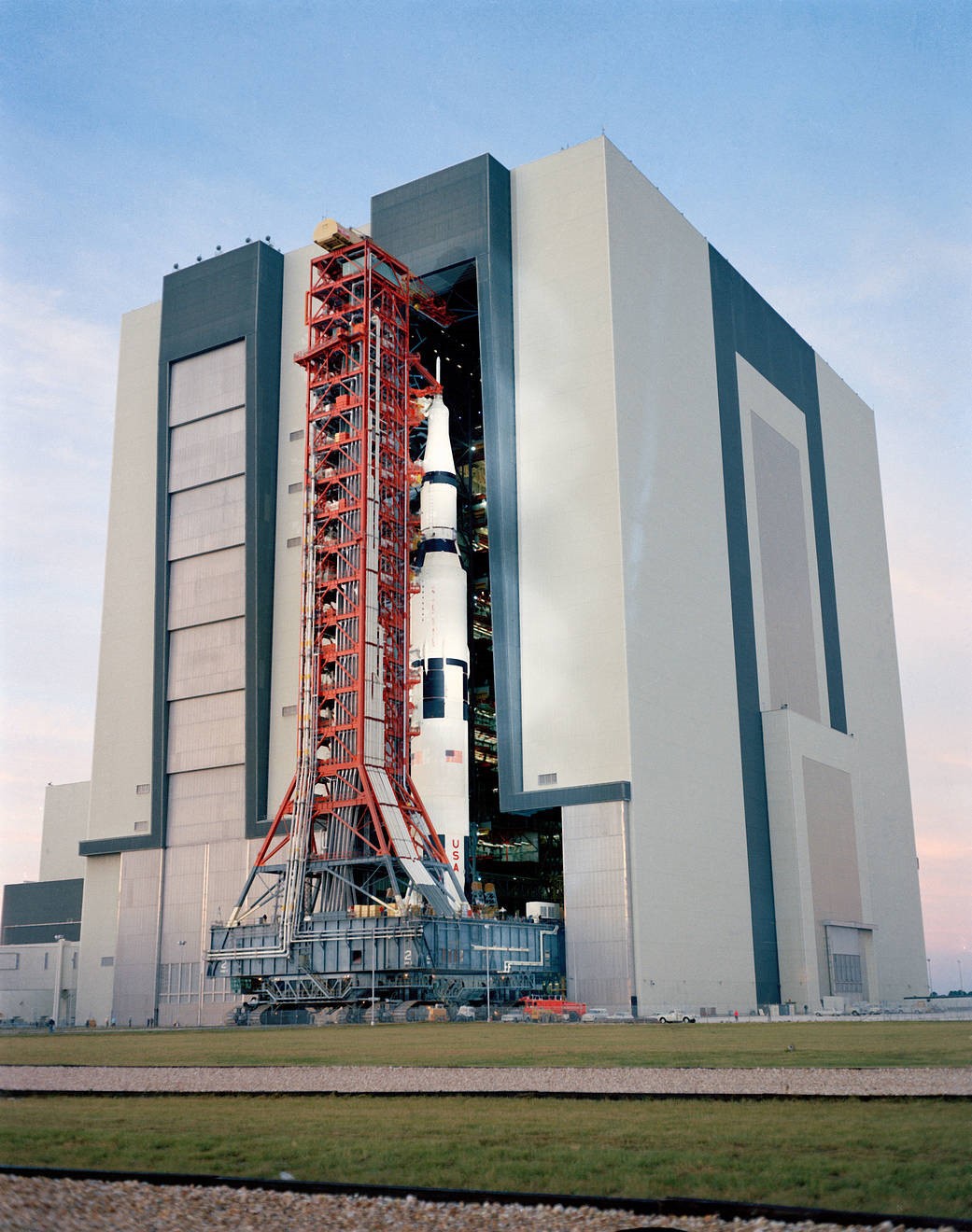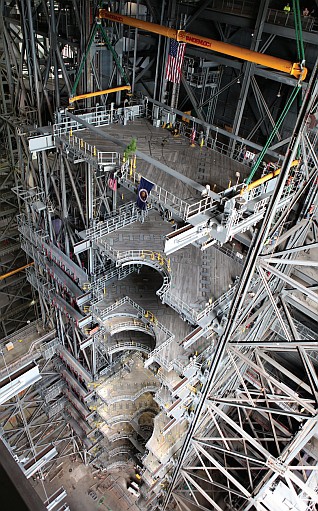
Author Steve Taranovich (left) and my NASA guide Matthew Miller (right) in front of NASA’s Vehicle Assembly Building (VAB), the only building to assemble a rocket that carried humans to the surface of another world. (Image courtesy of Loretta Taranovich)
I visited NASA Kennedy Space Center (KSC) in Florida, behind the scenes, and while I was there I had the pleasure of visiting the massive Vehicle Assembly Building whose sole purpose is to assemble rockets and payloads for their missions. This building is especially busy nowadays since commercial spaceflight has made Kennedy Space Center a Spaceport. This means KSC is no longer solely for NASA use but also accommodates Space-X, Blue Origin, Boeing, and more commercial efforts to come.
The VAB serves as the central hub of NASA’s multi-user spaceport, which is able to host several different kinds of rockets and spacecraft at the same time, both manned and unmanned. Some of these rockets and spacecraft will launch payloads into Earth orbit and many will be sent, first unmanned and later manned, to the Moon, Mars, and into deep space. The VAB has the infrastructure to prepare these varied missions for their exciting journeys.

This photo was taken on November 9, 1970, with a ground level view at Launch Complex 39, Kennedy Space Center, with the Apollo 14 (Spacecraft 110/Lunar Module 8/Saturn 509) space vehicle exiting the Vehicle Assembly Building. The Saturn V stack and its mobile launch tower, atop a huge crawler-transporter, were being rolled out to Pad A. (Image courtesy of NASA)
The VAB construction began with machines driving the first steel pilings into the ground, as part of the foundation, on Aug. 2, 1963. This effort was during NASA's early days focused upon sending astronauts to the moon for the Apollo Program by the end of the 60s decade. In total, 4,225 pilings were driven down 164 feet into bedrock with a foundation consisting of 30,000 cubic yards of concrete. Construction of the VAB took 98,590 tons of steel. The building was completed in 1965, and was one of the largest buildings in the world with 129,428,000 cubic feet of interior volume. The structure covers eight acres, soars 525 feet tall and is 518 feet wide. To accommodate moving, processing and stacking rocket stages, 71 cranes and hoists, including two 250-ton bridge cranes were installed.
On the east and west sides of the building there are four high bay doors, each was designed to open 456 feet in height to allow the rollout of the Apollo/Saturn V moon rockets mounted atop launch umbilical towers. These doors are the largest in the world and take about 45 minutes to completely open or close.
NASA had an American flag painted onto the VAB in 1976 for the Bicentennial Exposition on Space and Technology.

Shown here is the largest American flag, a 209-foot-tall, 110-foot-wide star spangled banner which is painted on the left side of the VAB (Image courtesy of NASA/Bill White)
The Exploration Ground Systems Program is leading an extensive refurbishment of the VAB to prepare it for the next chapter in human exploration. The modernization calls for a flexible setting rather than configuring the whole building toward supporting one design.
Old communications, power and vehicle access resources are being replaced with modern, efficient systems. Some of the utilities and systems scheduled for replacement have been used since the VAB opened in 1965. Apollo-era water, sewer and drainage piping is being replaced, and installation of a new fire protection system is just about complete.

Up towards the top interior of the VAB, a crane is shown here lowering the final work platform, ‘A north’, for installation in High Bay 3 on Jan. 12, 2017. In view below platform ‘A’, are nine previously installed levels of platforms. They will surround NASA’s Space Launch System (SLS) rocket and the Orion spacecraft to enable access during processing for missions, including the first uncrewed flight test of Orion atop the SLS rocket. (Image courtesy of NASA/Frank Michaux)
We are now poised to travel From the Moon to Mars.
 Steve Taranovich
Steve Taranovich
Discussions
Become a Hackaday.io Member
Create an account to leave a comment. Already have an account? Log In.